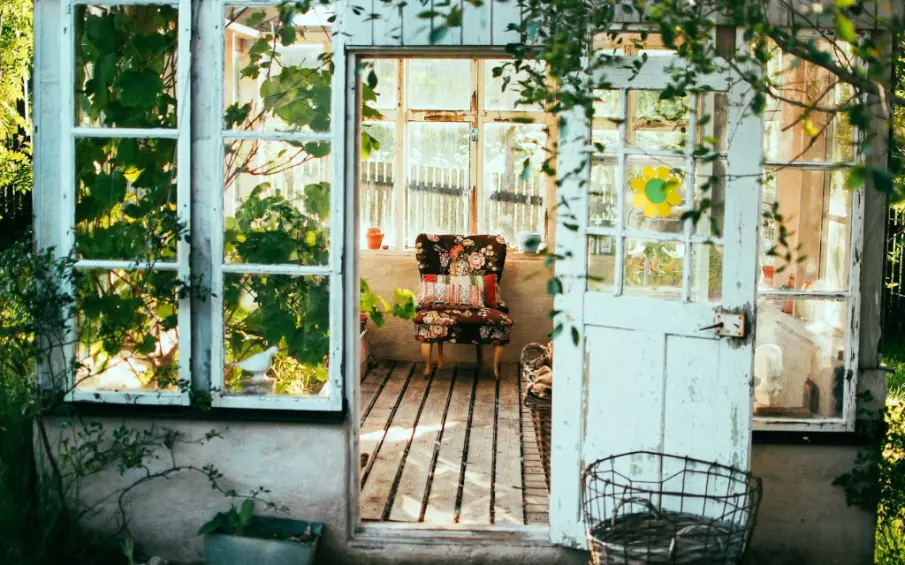Going Green Before You Sell? Here’s What Pays Off
When you're prepping your home for sale, the big question is always: what upgrades are worth it? Going green has become a hot trend; solar panels, energy-efficient windows, and fancy smart thermostats all sound great, but do they boost your home's value or help it sell faster? The answer is: some do, some don’t. If you're thinking about eco-friendly improvements before listing your home, this guide breaks down which green upgrades truly pay off and which might just burn through your budget.

Start with Low-Cost, High-Impact Upgrades
You don’t need to invest thousands to make your home more energy-efficient. Some of the most cost-effective changes are also the simplest. Swapping out incandescent bulbs for LEDs, installing low-flow showerheads, and sealing air leaks can make a noticeable difference. Buyers may not list these features as must-haves, but they appreciate lower utility bills and the sense that the home has been well-maintained.
A fresh HVAC filter, weatherstripping around doors, and a well-insulated attic are small touches that send the message: this home is cared for. And that’s a big deal when buyers are comparing multiple listings.
Solar Panels: Worth It or Wallet Buster?
Solar energy is one of the most recognized green features. It’s flashy, modern, and screams sustainability. But before you call an installer, know this solar panels are a mixed bag when it comes to resale value.
If you own the panels outright (no lease), they can increase your home’s marketability and value, especially in sunny states like California, Arizona, or Florida. Buyers see long-term energy savings and often feel good about reducing their carbon footprint.
However, leased panels can be a deal-breaker. Many buyers are reluctant to take over a solar lease, especially if they don’t understand the terms or feel tied to a long-term contract. If you're not sure whether to go solar, it may be better to focus on less complicated upgrades unless you plan to stay in the home for a few years before selling.
Energy-Efficient Appliances Seal the Deal
Kitchens sell homes everyone knows it. So if you’re upgrading, consider going for Energy Star-rated appliances. These use less water and energy, and modern models often come with smart features that today’s buyers love.
While buyers won’t always pay a premium just for an energy-efficient fridge, seeing a suite of updated, green appliances gives your home an edge. It makes it feel turnkey, and that’s often worth more than the sum of its parts.
Plus, updated appliances can help your listing photos pop, which gets more eyes on your home from the start. If you're looking for guidance on how to make eco-conscious upgrades that resonate with today’s buyers, working with experienced professionals like Revival Homebuyers can provide the insight and support you need.
Landscaping That Saves Water and Adds Curb Appeal
Curb appeal matters, but traditional lawns can be water-hogs, especially in drought-prone areas. Instead of spending on sod, think about xeriscaping a landscaping style that uses drought-tolerant plants and native grasses. Not only does this reduce water bills, but it also gives your yard a trendy, low-maintenance vibe.
Adding mulch around trees and flowerbeds, installing a drip irrigation system, and using rain barrels can also make your property more eco-conscious. Buyers are increasingly mindful of climate issues, and these simple outdoor upgrades show you’re thinking ahead.
One or two native trees can also help reduce cooling costs and boost property value by adding shade and privacy plus, they just make the yard feel more inviting.
Windows, Insulation, and What’s Behind the Walls
You can’t see insulation or feel the R-value of a window when you walk through a home but you can feel the temperature difference. Drafty rooms and uneven heating or cooling can raise red flags for buyers. Upgrading insulation or installing double- or triple-pane windows can improve energy efficiency and comfort. However, these upgrades often fall into the silent value category buyers might not directly pay more for them, but a well-insulated, comfortable home is more likely to sell faster. You can even highlight these upgrades in your listing description. Mention recent insulation work, new windows, or a high-efficiency furnace. It may not get you a bidding war, but it can reassure cautious buyers that your home won’t come with hidden energy costs.
Smart Tech That’s Also Green
Smart thermostats like the Nest or Ecobee have become popular in modern homes, and for good reason. They’re relatively inexpensive to install, easy to use, and show buyers that your home is up-to-date. They also help reduce energy bills by learning habits and adjusting temperatures automatically. Some buyers even expect these in listings, especially if other smart features are present. It's a small detail that can add a layer of appeal, especially for tech-savvy shoppers. Other green-smart upgrades include smart irrigation systems, leak detectors, and app-controlled lighting all relatively affordable, and great for marketing your home as modern and efficient.
Green Certifications: Are They Worth the Paper?
You may have seen labels like LEED, Energy Star Home Certification, or HERS Index on certain listings. These third-party certifications can add credibility to your green claims, but they often require inspections, paperwork, and sometimes expensive upgrades to qualify.
Unless your home is already near certification standards, the process may not be worth the time and money if you're planning to sell soon. Instead, focus on highlighting the specific upgrades you've done like insulation, new appliances, or smart tech in your marketing materials.
Buyers Want Efficiency, Not Complexity
It’s easy to assume that more green features always equal a better price but many buyers are looking for simplicity. They want to move into a comfortable, affordable home that won’t break the bank in utility bills. That’s where energy-efficient lighting, newer HVAC systems, and low-flow fixtures shine. They’re noticeable, easy to use, and don’t come with a learning curve.
Keep your improvements practical and well-documented. If you’ve made changes, have receipts, warranties, and energy audits available. This transparency helps build trust and can speed up the sale.
Who Buys Green Homes?
Younger buyers, especially millennials and Gen Z, are more likely to care about environmental issues. They’re also often more open to paying a bit more for sustainable homes if they trust the upgrades are legit. That’s why it’s important to showcase your eco-friendly updates and position your home as an energy-efficient, budget-friendly choice. These generations are doing their homework and when they see smart upgrades with real benefits, they’re ready to act.
Small Green Changes Can Mean Big Returns
You don’t need to spend a fortune to make your home eco-friendly and appealing to buyers. Focus on cost-effective improvements that enhance comfort and lower energy bills. From smart thermostats to drought-resistant landscaping, green updates can make your home stand out without draining your wallet. If you're strategic, you can go green and still come out ahead at the closing table.








